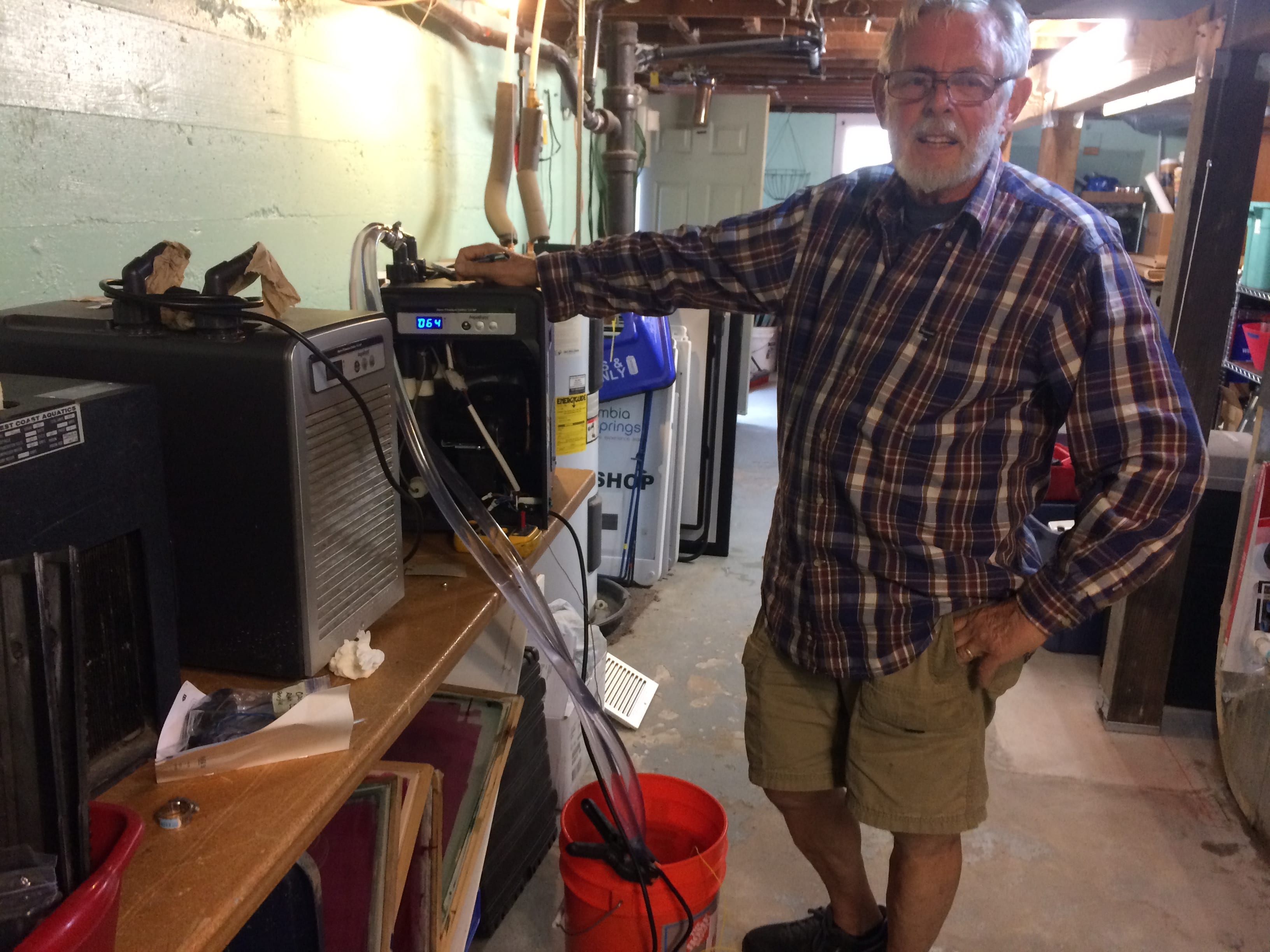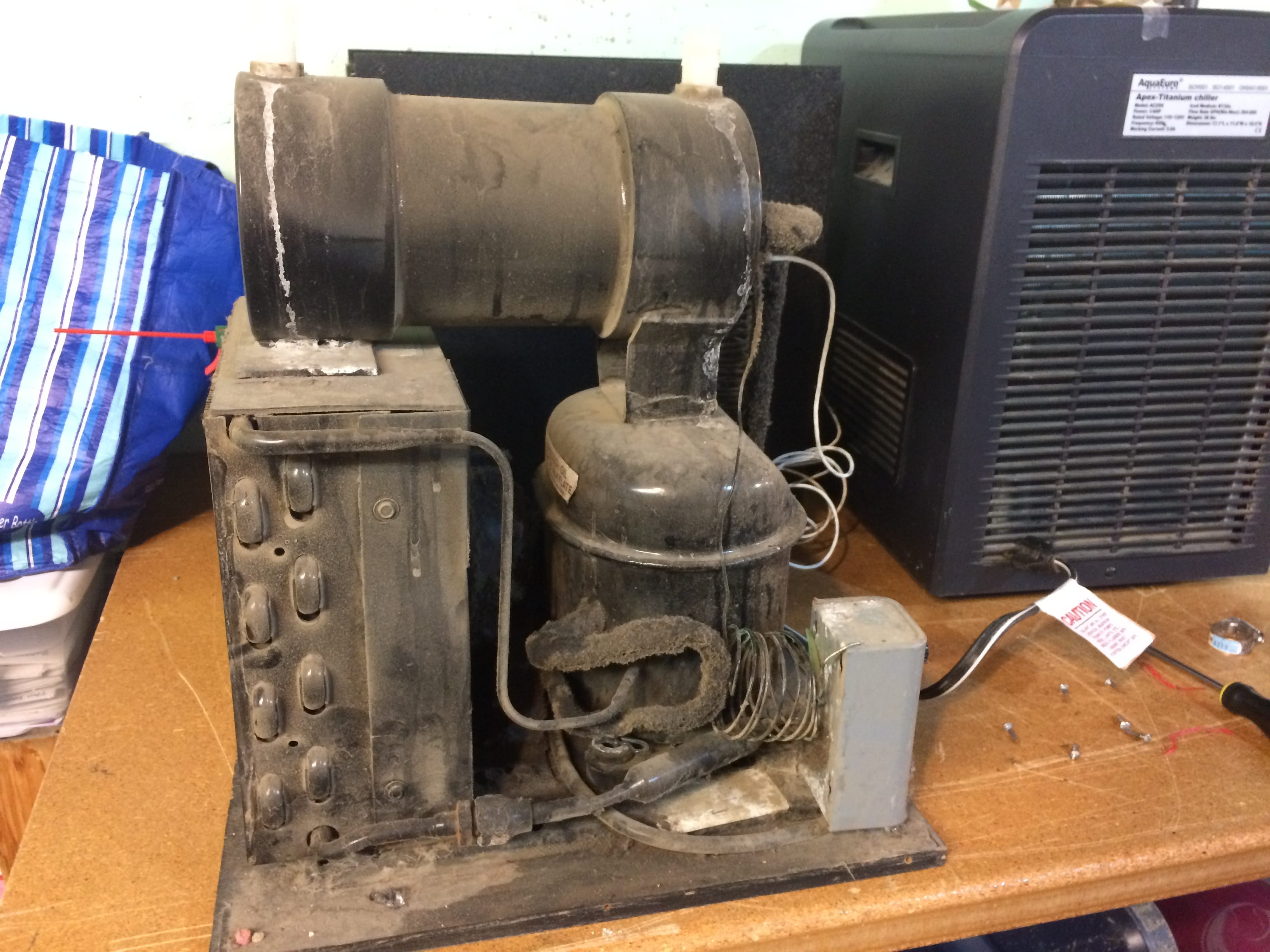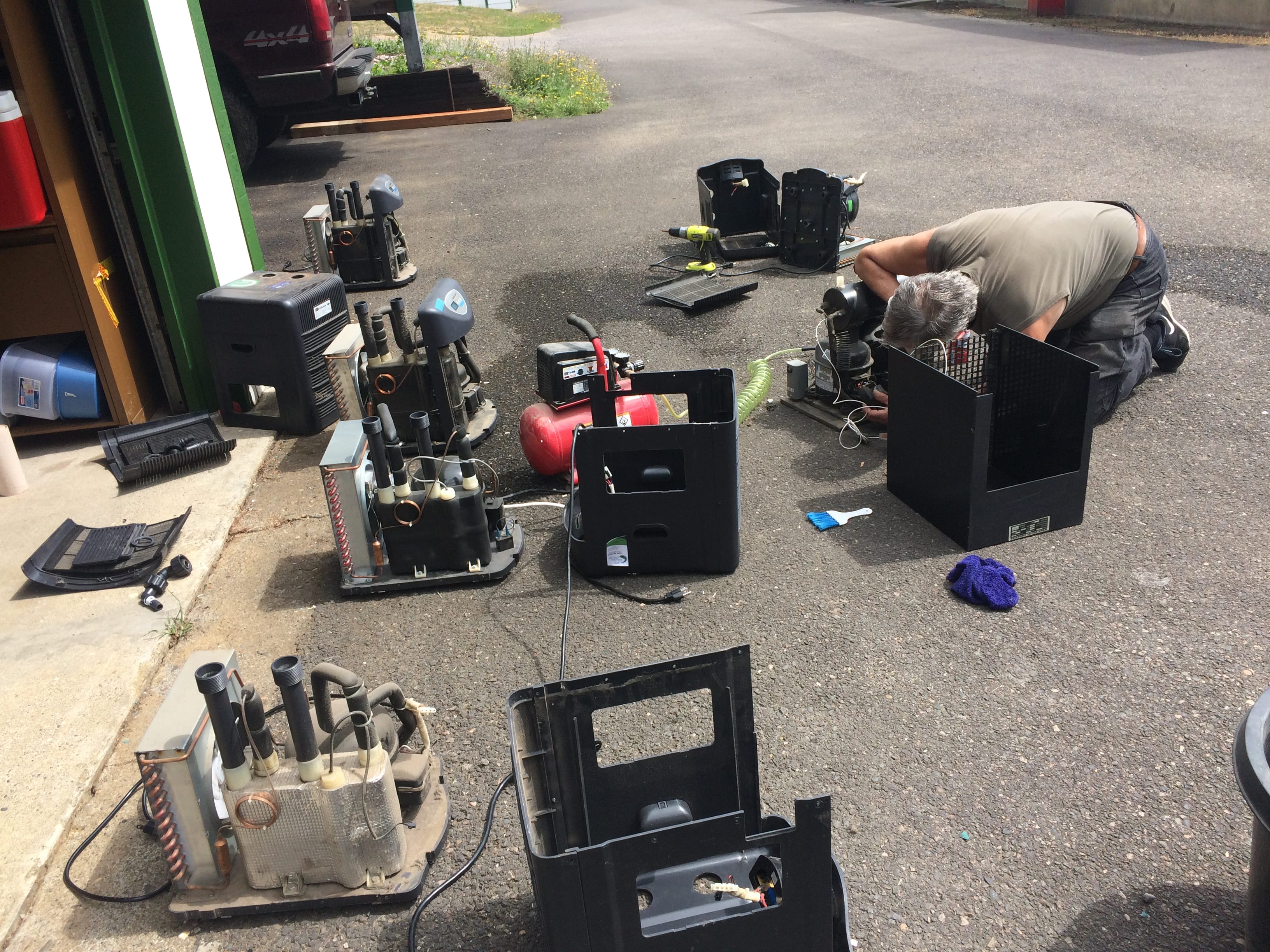“Pete, you looked like Ghostbusters just then,” I said. Pete let out a hearty laugh and explained, “This machine has two modes it operates on… that’s the noisy mode.” He ran a wand over different internal components of one of our aquarium chillers, checking for Freon leaks as he kept an eye on the yellow meter he held in his other hand. “No leaks,” he said, as he set the instrument down on the work bench. He paused and added, “No ghosts either.”

Pete McReynolds made his career as a teacher and HVAC specialist, and has joined a growing network of “Fixers” as a volunteer with Repair Clark County, a Columbia Springs program where the public can bring broken household items to be repaired instead of sending them to the landfill. Typically Repair program volunteers work at monthly events hosted in different locations throughout Clark County, but we also have a workshop at Columbia Springs where volunteers work on special projects.
Pete’s special project is repairing the broken aquarium chillers I use for the Salmon in the Classroom program. In order to keep aquarium water cold enough to raise salmon at our participating schools, each tank setup includes a chiller to recirculate cold water, mimicking local stream conditions. Each chiller costs $600 to purchase, and prices have gone up in the last year due to tariffs.
Repairing Salmon in the Classroom chillers requires a bit of discretion, and thinking about cost-effectiveness, waste reduction, and overall life expectancy of the machine all factor in. I can extend the life of chillers by paying close attention to ventilation and dust, but recharging them with refrigerant or troubleshooting the internal components can only be done by licensed professionals. It kills me to take a chiller that still “kind of” works to the transfer center for disposal. My worst case scenario, however, is when a chiller stops working in the spring when students are raising 250 baby salmon. If this happens over the weekend when no one is at the school, the whole population can be wiped out, and is devastating for both teachers and students.

Pete understands that and sets up a very systematic testing station in our workshop. We open up 2 newer models that have been giving an “Error” message, and hook them up to recirculate water in a 5 gallon bucket. He brings his own special testing equipment and takes detailed notes, including how long it takes the units to bring the water temperature from 85F to 50F. We notice that even though the 2 chillers are the same model, they have different capacitors. One is producing much more condensation than the other. The digital reading on the other seems constant for several days, then swings erratically from 50 to 45 to 32 and back. I have a replacement temperature probe from the manufacturer, but wasn’t comfortable installing it myself. We opened up an older model that was caked in dust and cobwebs. “This looks like an old steam engine!” Pete said, with what sounded a little like admiration in his voice. We took it outside to dust it.
It turns out that dusting the evaporator coils on the chiller is the number one maintenance task we can do to extend the life of our chillers. Pete and I opened up 8 additional chillers, rolled out the big air compressor, and blasted the dust out of each one. The whole process took several (dusty!) hours, and we still need to test each one to make sure they can hold a constant temperature before I put them back into schools. Even if we can get half of them up and running again, that would be a huge benefit to Salmon in the Classroom.

Special thanks to Pete McReynolds for donating his time and expertise to help our Salmon in the Classroom program, and to Terra Heilman for recruiting such a fabulous volunteer through the Repair Clark County program!
